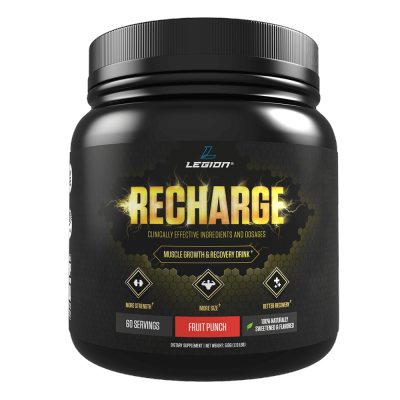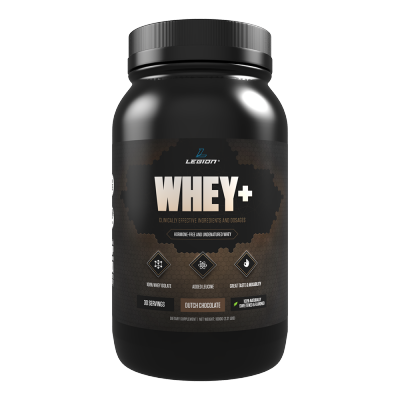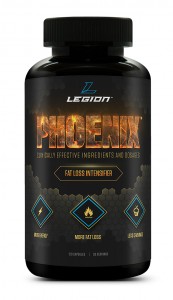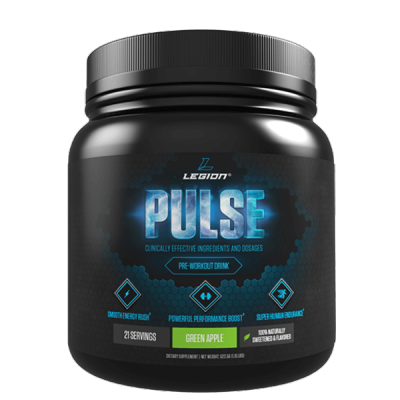If you’re like most people, you don’t just want “big muscles”–you want defined muscles.
For example, if you’re a guy, whose physique would you rather have?
His:
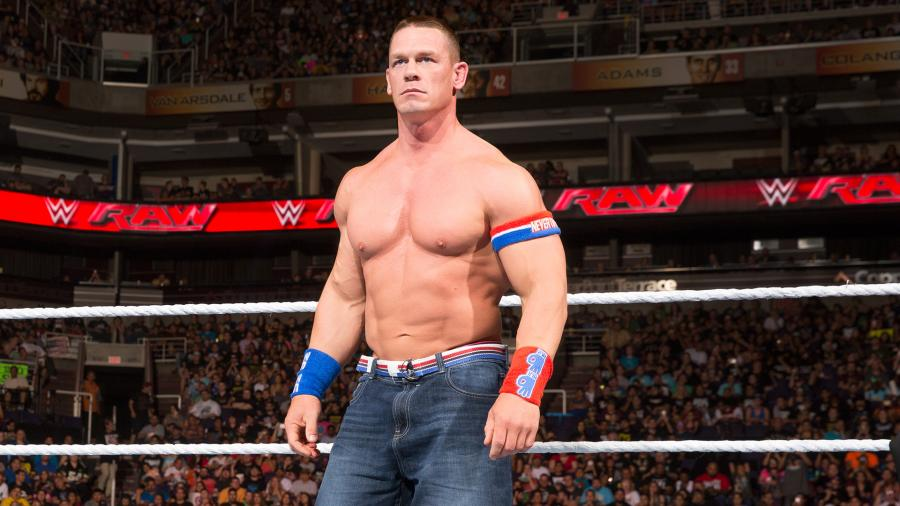
Or mine:
In other words, would you rather be big and “fluffy,” or smaller but ripped?
And if you’re a gal, what’s most appealing to you?
This:

Or this:

Skin and bones or lean and toned?
Well, if you chose the second option, then you’re in the right place, because in this article, I’m going to teach you the simple science of not just gaining muscle, but gaining muscle definition.
We’re going to cut through the myths and lies, too.
“Clean eating” isn’t the key, and neither is exercise choice, rep ranges, or supplementation. Genetics aren’t the answer, either (fortunately!).
You may not have the genetics to look exactly like your favorite Instagram model, but you don’t need singular genes to be a shining example of muscle definition.
You have the same types of physiological hardware as the rest of us, and your body (and muscles) will respond fantastically if given the proper stimuli.
So, if you’re ready to learn what muscle definition is, and what doesn’t increase muscle definition and what does, then keep reading.
- What Is Muscle Definition?
- The 5 Biggest Muscle Definition Myths
- Muscle Definition Myth #1 You Must “Eat Clean” to Look Lean
- Muscle Definition Myth #2 You Must Do High-Rep Training
- Muscle Definition Myth #3 You Must Use Cables and Machines
- Muscle Definition Myth #4 You Must Eat a Low-Carb Diet
- You don’t lose fat faster on a low-carb diet.
- You gain less muscle on a low-carb diet.
- Muscle Definition Myth #5 You Must Do Lots of Cardio
- How to Increase Muscle Definition
- What About Supplements?
- Creatine
- Protein Powder
- Fat Burner
- Pre-Workout Supplement
- The Bottom Line on Increasing Muscle Definition
Table of Contents
Want to listen to more stuff like this? Check out my podcast!
What Is Muscle Definition?
Let’s start with cutting straight to the bone, shall we?
Muscle definition is the combination of developed muscles with a low(ish) body fat percentage.
That’s it.
As you gain muscle and lose fat, your muscle definition increases.
Simply having a lot of muscle isn’t enough. For example, this guy has a lot of muscle:
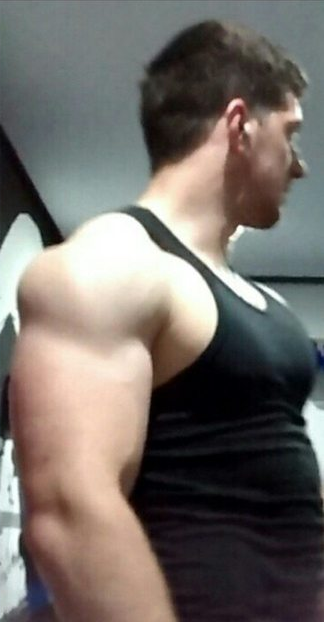
But because his body fat percentage is somewhere north of 15%, he doesn’t have much in the way of muscle definition.
And this guy has much less body fat:

But not enough muscle to complete the look.
On the flip side, many guys chasing muscle definition have aspired to Brad Pitt’s iconic Fight Club look:

Well, for the average guy to get there, he would need to gain about 15 pounds of muscle in the right places (upper body, mainly) and reduce his total body fat to very low levels (7 to 8%).
And for those that want Pitt’s Troy physique…

…more muscle is needed, closer to 25 pounds more than the average dude, with more or less the same low body fat percentage.
Now, this isn’t exactly a revelation to most guys, and doesn’t discourage us.
We got into weightlifting to get bigger and leaner and we just want to know how to do that most efficiently.
Many women, on the other hand, are skeptical or downright incredulous of advice to gain muscle because they’ve been told that it’ll just make them “bulky,” not “defined.”
This is completely false.
Gaining muscle doesn’t make you bulky. Having too much body fat does.
Ironically, women have to do more or less the same thing as men to have the athletic physique that they really want, with curves and lines in the right places.
They have to gain a significant amount of muscle and maintain a relatively low body fat percentage.
Specifically, most women need to gain about 10 to 15 pounds of muscle and get to around 20% body fat to have the whole package: shapely legs, curvy butt, tight arms, and flat stomach.
That’s how you look like this:
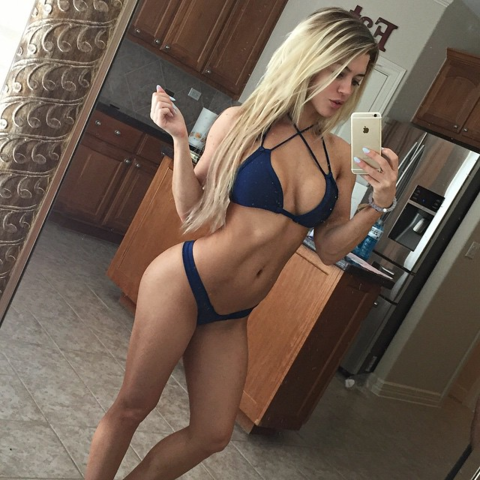
Take that same woman and add 15 pounds of fat to her frame, however, and you might be surprised how “blocky” she would look.
You see, fat accumulates inside and on top of muscles, and the more you have of both, the larger and more amorphous your body looks.
Your legs turn into logs. Your butt gets too big for your britches. Your arms fill up like sausages.
Bring that body fat back down, however, and the muscle you’ve built shines. Instead of looking flabby and malnourished, you look lean and toned. Your butt is round and perky. Your legs have sleek curves. Your arms look defined.
So, that’s what muscle definition is.
The next question is how to actually achieve it?
Well, before we talk about that, let’s dispel some of the biggest muscle definition myths.
The 5 Biggest Muscle Definition Myths
If you’re struggling to improve your muscle definition, you’ve probably bought into one or more of these myths.
I made all these mistakes myself (and many more), and didn’t straighten it all out until I had successfully wasted years in the gym, spinning my wheels.
C’est la vie. 😉
Anyhow, let’s take a look at the five biggest reasons most people fail to move the muscle definition needle…
Muscle Definition Myth #1
You Must “Eat Clean” to Look Lean
How many times have you heard that you have to “clean up” your diet to “tone up” your body?
Fitness magazines have been dinning this into our heads for decades now, and it’s one of the first (and only) things a personal trainer will tell you about dieting.
Well, it’s simply not true.
When it comes to body composition, how much you eat is far more important than what.
Yes, the nutritional value of your diet matters, but as far as gaining muscle and losing fat goes, calories and “macros” are king, not the individual foods that you eat.
The primary mechanism in play here is energy balance, which is the relationship between the amount of energy that you consume versus burn, and which ultimately dictates whether you gain, lose, or maintain weight.
This is why losing fat requires eating fewer calories (energy) than you burn, regardless of the foods that you get those calories from.
In that sense, a calorie is very much a calorie.
Your goal shouldn’t be to merely lose or gain weight, though. It should be to lose fat and not muscle, and to gain muscle and not fat.
And when those are the goals, you have to go beyond mere calories in vs. calories out.
You need to factor in where those calories are coming from in terms of protein, carbohydrate, and fat, which are also known as “macronutrients,” because your body requires them in large amounts to remain alive.
So, know this:
The idea that the “cleanliness” of a food determines whether you gain or lose fat is nonsense.
It could be said that certain foods are more conducive to fat gain due to high caloric density and palatability, which encourages overeating, but that’s a far cry from the prevailing belief that one food “makes you fat” whereas another “makes you lean.”
The same fundamentals apply to gaining muscle, by the way.
To gain muscle efficiently, you must eat enough calories (slightly more than you’re burning), and make sure that your macronutrients are properly balanced (high protein and carb is the key).
(If you want to learn more about this, check out this article on “clean bulking.”)
Muscle Definition Myth #2
You Must Do High-Rep Training
You’ve probably heard this one a lot, too.
You know, to get defined, you need get huge pumps and really “feel the burn” to “bring out the cuts” in your muscles.
Nope.
Dropping the weights and increasing the reps doesn’t do anything more than increase workout volume.
It doesn’t automagically result in more muscle separation, density, or vascularity.
In fact, if you’re like most people, you need to do the exact opposite of this myth to maximally improve your muscle definition.
In other words, you need to focus more on heavy weightlifting for fewer reps.
The reason for this is simple:
- To increase your overall muscle definition, you need to, first and foremost, gain more muscle.
- The best way to gain muscle is progressive overload, or increasing tension in the muscle over time.
- The easiest way to progressively overload your muscles, and especially if you’re new to weightlifting, is to train with heavy weights.
Furthermore, you want to make sure that you don’t lose muscle while cutting fat, and heavy weightlifting is the best way to do that.
This is why I preach the importance of increasing whole-body strength, and why I recommend that you make sure that your training programs more or less always include various types of heavy compound weightlifting.
Muscle Definition Myth #3
You Must Use Cables and Machines
This is a natural extension of the last myth.
It’s a really bad idea to do “burnout” sets on exercises like the squat, overhead press, and deadlift, so if you’re going to chase the pump, then you’re probably going to turn to cables and machines.
Well, machines and isolation exercises can have a place in your training, but for stimulating muscle growth, they play second fiddle to free weight exercises, and to compound exercises in particular.
(Compound exercises involve several major muscle groups. For instance, the squat engages your quads, glutes, hamstrings, core, back, and even your calves.)
So, this brings us back to the takeaway in the last myth:
Most people need more muscle to have more muscle definition, and grinding away on cables and machines simply aren’t the best way to get there.
Instead, focus on the harder stuff–the big, barbell movements that involve your entire body, as opposed to the “fun” stuff that pumps up your biceps and chest.
Muscle Definition Myth #4
You Must Eat a Low-Carb Diet
Low-carb diets are all the rage these days.
If we just cut the carbs, we’re told, the heavens will part and bless us with the body that we’ve always dreamed of.
Too bad it doesn’t work like that. And especially not for us fitness folk.
Ironically, low-carb dieting will not only fail to help you improve your muscle definition, it’ll actually make it harder.
Here’s why…
You don’t lose fat faster on a low-carb diet.
Study after study after study have shown that so long as protein intake is high, people on low-carb diets don’t lose fat any faster than those on high-carb diets.
In other words, so long as you eat the right amount of calories and protein, how many carbs you eat has no effect on how much fat you lose or how quickly you lose it.
You gain less muscle on a low-carb diet.
When you cut your carbs, you reduce the amount of glycogen stored in the muscles, which is an important source of fuel for your workouts.
This, in turn, reduces both your muscle endurance and strength, which results in lower quality workouts and slower progression in your training.
Naturally, this means slower muscle growth.
Moreover, research shows that low intramuscular glycogen levels impairs post-workout signalling that contributes to muscle growth.
In other words, low-carb dieting causes your muscles to respond less anabolically to your workouts, making them less effective for muscle building.
As if all that weren’t all enough, low carb dieting also raises cortisol levels and reduces testosterone levels.
As cortisol is a powerful catabolic hormone and testosterone is the primary hormonal driver of muscle growth, the downsides here are clear.
Muscle Definition Myth #5
You Must Do Lots of Cardio
You’re going to love me for this one.
Guess what?
You don’t have to grind your joints into dust with cardio to get lean.
In fact, you can lose gobs of fat doing absolutely no cardio if you’re so inclined because, as you now know, energy balance is what drives fat loss, not food or exercise choices.
That said, cardio can help you lose fat faster because, surprise surprise, it burns energy. Research shows that it can also help you control your appetite, making it easier to stick to your diet.
The key, though, is not doing too much cardio.
Going overboard with it can cause you to lose sizable amounts of muscle along with the fat, bringing you ever closer to the “skinny fat” look that so many people dread.
Instead, you should focus the majority of your fat loss efforts on resistance training, which will not only burn calories (and thus fat), but preserve, if not build, muscle as well.
Think of cardio as optional and supplementary.
Personally, I do 1-to-2 low- to moderate-intensity cardio workouts per week (walking, cycling, or rucking, for example) of 20-to-40 minutes each.
How to Increase Muscle Definition
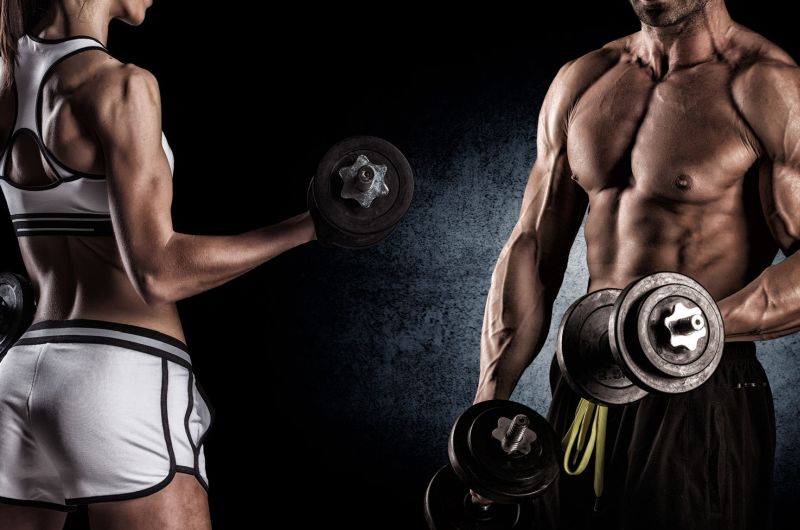
As we’ve already discussed, the name of the game in increasing muscle definition is adding muscle and dropping fat.
If you’re like most guys, you’re going to need to add 15 to 25 pounds of muscle to your frame and get to or below 10% body fat to get the look that you really want.
And if you’re a woman, you’re probably going to need to gain 10 to 15 pounds of muscle and sit around 20% body fat to have that Instagram-worthy “bikini body.”
The question, then, is how to best get there, and specifically, what to do first: gain muscle or lose fat?
Well, if you don’t have at least a year of proper strength training under your belt, you should be able to build muscle and lose fat at the same time.
You don’t have to do anything special, either. You simply set up your diet to cut fat, train hard, make sure you’re recovering, and let your body do the rest.
If you’re an intermediate or advanced weightlifter, though, you’re going to have to choose one or the other: cut fat or gain size.
And if you’re a guy over 15% body fat or a gal over 25%, then you want to focus on cutting fat first.
(If you’re not sure what your body fat percentage is, check out this article.)
I explain why in detail here, but the long story short is your body’s muscle building machinery just works best when you’re lean, and keeping your body fat levels generally lower makes it easier to manage your body composition over the long term.
Once you’ve cut your body fat levels to the 10 to 12% (men)/20 to 22% (women) range, then you want to focus on gaining muscle.
This is also where you want to start if you’re already at those body fat levels. You should get right into maximizing muscle gain.
I have good news, too.
That doesn’t mean you have to gorge yourself or drink a gallon of milk every day and pile on the body fat.
In fact, this is exactly what you don’t want to do when you’re “bulking.”
Instead, you want to see a slow and steady gain of both fat and muscle and strength over the course of several months.
I break it all down here, so if you’re not sure how to “lean bulk,” definitely give it a read.
What About Supplements?
I saved this for last because, quite frankly, supplements are far less important than proper diet and training.
Unfortunately, no amount of weight loss pills and powders are going to give you the body you want.
In fact, most fat loss supplements are completely worthless.
But, here’s the good news:
If you know how to drive fat loss and muscle gain with proper eating and exercise, like we’ve just covered in this article, then certain supplements can help speed up the process. (And if you’d like to know exactly what supplements to take to reach your fitness goals, take the Legion Supplement Finder Quiz.)
Based on my personal experience training for over 10 years, and working with thousands of people, I’m comfortable saying that a proper weight loss supplementation routine can increase fat loss by about 30 to 50%.
In other words, if you can lose 1 pound of fat per week through training and diet (which you can), you can lose 1.3 to 1.5 pounds of fat per week by adding the right supplements.
So, let’s quickly review the supplements that are going to help you get the muscle definition that you want faster.
Creatine
Creatine is a substance found naturally in the body and in foods like red meat.
It’s perhaps the most researched molecule in the world of sport supplements–the subject of hundreds of studies–and the consensus is very clear.
Supplementation with creatine helps you…
If you workout, you should take creatine, and you’ll find it in my post-workout supplements RECHARGE, which helps you gain muscle and strength faster and recover better from your workouts.
RECHARGE is 100% naturally sweetened and flavored and each serving contains:
- 5 grams of creatine monohydrate
- 2100 milligrams of L-carnitine L-tartrate
- 10.8 milligrams of corosolic acid
This gives you the proven strength, size, and recovery benefits of creatine monohydrate plus the muscle repair and insulin sensitivity benefits of L-carnitine L-tartrate and corosolic acid.
Protein Powder
You don’t need protein supplements to gain muscle, but, considering how much protein you need to eat every day to maximize muscle growth, getting all your protein from whole food can be impractical.
That’s the main reason I created (and use) a whey protein supplement.
(There’s also evidence that whey protein is particularly good for your post-workout nutrition.)
WHEY+ is 100% naturally sweetened and flavored whey isolate that is made from milk sourced from small dairy farms in Ireland, which are known for their exceptionally high-quality dairy.
I can confidently say that this is the creamiest, tastiest, healthiest all-natural whey protein powder you can find.
Fat Burner
The reality is most “fat burners” are junk, but there are a handful of natural, safe substances that have been scientifically proven to accelerate fat loss.
And that’s why I created PHOENIX.
PHOENIX is a fat burner that I developed that contains seven natural compounds proven help you lose fat faster, including synephrine, green tea extract, and forskolin.
The bottom line is if you want to lose fat faster without taking a bunch of stimulants or harsh chemicals, then you want to try PHOENIX.
Pre-Workout Supplement
There’s no question that a pre-workout supplement can get you fired up to get to work in the gym.
There are downsides and potential risks, however.
Many are stuffed full of ineffective ingredients and/or minuscule dosages of otherwise good ingredients, making them little more than a few cheap stimulants with some “pixie dust” sprinkled in to make for a pretty label and convincing ad copy.
Many others don’t even have the stimulants going for them and are just complete duds.
Others still are downright dangerous, like USPLabs’ popular pre-workout “Jack3d,”which contained a powerful (and now banned) stimulant known as DMAA.
Even worse was the popular pre-workout supplement “Craze,” which contained a chemical similar to methamphetamine.
The reality is it’s very hard to find a pre-workout supplement that’s light on stimulants but heavy on natural, safe, performance-enhancing ingredients like beta-alanine, betaine, and citrulline.
And that’s why I made my own pre-workout supplement.
It’s called PULSE and it increases energy, improves mood, sharpens mental focus, increases strength and endurance, and reduces fatigue…without the unwanted side effects or crash.
It accomplishes this by providing you with 6 of the best performance-enhancing ingredients available:
- Caffeine. Caffeine is good for more than the energy boost. It also increases muscle endurance and strength.
- Beta-Alanine. Beta-alanine is a naturally occurring amino acid that reduces exercise-induced fatigue, improves anaerobic exercise capacity, and can accelerate muscle growth.
- Citrulline Malate. Citrulline is an amino acid that improves muscle endurance, relieves muscle soreness, and improves aerobic performance.
- Betaine. Betaine is a compound found in plants like beets that improves muscle endurance, increases strength, and increases human growth hormone and insulin-like growth factor 1 production in response to acute exercise.
- Ornithine. Ornithine is an amino acid found in high amounts in dairy and meat that reduces fatigue in prolonged exercise and promotes lipid oxidation (the burning of fat for energy as opposed to carbohydrate or glycogen).
- Theanine. Theanine is an amino acid found primarily in tea that reduces the effects of mental and physical stress, increases the production of nitric oxide, which improves blood flow, and improves alertness, focus, attention, memory, mental task performance, and mood.
And what you won’t find in PULSE is equally special:
- No artificial sweeteners or flavors..
- No artificial food dyes.
- No unnecessary fillers, carbohydrate powders, or junk ingredients.
So, if you want to feel focused, tireless, and powerful in your workouts…and if you want to say goodbye to the pre-workout jitters, upset stomachs, and crashes for good…then you want to try PULSE.
And again, if you feel confused about what supplements you should take to reach your goals, take the Legion Supplement Finder Quiz to learn exactly what supplements are right for you. It’s the best way to ensure you get the most out of your supplement regimen.
The Bottom Line on Increasing Muscle Definition
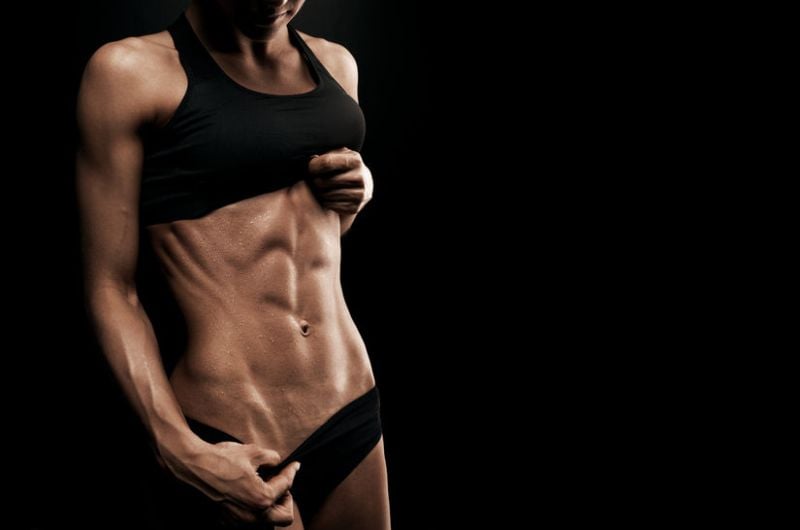
Increasing muscle definition is pretty simple, really.
If you want more defined muscles, then you need one of two things or both:
- More muscle.
- Less body fat.
If you already have an above-average amount of muscle, then you probably just need lower body fat levels (~10% for men and ~20% for women).
If you don’t, then you’re going to need to get the muscle needed (15 to 25 pounds for most guys starting from scratch, and 10 to 15 pounds for most gals) and then settle your body fat into the right range.
That’s all there is to it. Happy training. 🙂
What’s your take on increasing muscle definition? Have anything else you’d like to share? Let me know in the comments below!
+ Scientific References
- Haskell CF, Kennedy DO, Milne AL, Wesnes KA, Scholey AB. The effects of l-theanine, caffeine and their combination on cognition and mood. Biol Psychol. 2008;77(2):113-122. doi:10.1016/j.biopsycho.2007.09.008
- Nobre AC, Rao A, Owen GN. L-theanine, a natural constituent in tea, and its effect on mental state. Asia Pac J Clin Nutr. 2008;17(SUPPL. 1):167-168. doi:10.6133/apjcn.2008.17.s1.40
- Foxe JJ, Morie KP, Laud PJ, Rowson MJ, De Bruin EA, Kelly SP. Assessing the effects of caffeine and theanine on the maintenance of vigilance during a sustained attention task. Neuropharmacology. 2012;62(7):2320-2327. doi:10.1016/j.neuropharm.2012.01.020
- Bryan J. Psychological effects of dietary components of tea: Caffeine and L-theanine. Nutr Rev. 2008;66(2):82-90. doi:10.1111/j.1753-4887.2007.00011.x
- Siamwala JH, Dias PM, Majumder S, et al. L-Theanine promotes nitric oxide production in endothelial cells through eNOS phosphorylation. J Nutr Biochem. 2013;24(3):595-605. doi:10.1016/j.jnutbio.2012.02.016
- Kimura K, Ozeki M, Juneja LR, Ohira H. l-Theanine reduces psychological and physiological stress responses. Biol Psychol. 2007;74(1):39-45. doi:10.1016/j.biopsycho.2006.06.006
- Sugino T, Shirai T, Kajimoto Y, Kajimoto O. l-Ornithine supplementation attenuates physical fatigue in healthy volunteers by modulating lipid and amino acid metabolism. Nutr Res. 2008;28(11):738-743. doi:10.1016/j.nutres.2008.08.008
- Apicella JM, Lee EC, Bailey BL, et al. Betaine supplementation enhances anabolic endocrine and Akt signaling in response to acute bouts of exercise. Eur J Appl Physiol. 2013;113(3):793-802. doi:10.1007/s00421-012-2492-8
- Lee EC, Maresh CM, Kraemer WJ, et al. Ergogenic effects of betaine supplementation on strength and power performance. J Int Soc Sports Nutr. 2010;7. doi:10.1186/1550-2783-7-27
- Trepanowski JF, Farney TM, McCarthy CG, Schilling BK, Craig SA, Bloomer RJ. The effects of chronic betaine supplementation on exercise performance, skeletal muscle oxygen saturation, and associated biochemical parameters in resistance trained men. J Strength Cond Res. 2011;25(12):3461-3471. doi:10.1519/JSC.0b013e318217d48d
- Bendahan D, Mattei JP, Ghattas B, Confort-Gouny S, Le Guern ME, Cozzone PJ. Citrulline/malate promotes aerobic energy production in human exercising muscle. Br J Sports Med. 2002;36(4):282-289. doi:10.1136/bjsm.36.4.282
- Pérez-Guisado J, Jakeman PM. Citrulline malate enhances athletic anaerobic performance and relieves muscle soreness. J Strength Cond Res. 2010;24(5):1215-1222. doi:10.1519/JSC.0b013e3181cb28e0
- Kern BD, Robinson TL. Effects of β-alanine supplementation on performance and body composition in collegiate wrestlers and football players. J Strength Cond Res. 2011;25(7):1804-1815. doi:10.1519/JSC.0b013e3181e741cf
- Smith AE, Walter AA, Graef JL, et al. Effects of β-alanine supplementation and high-intensity interval training on endurance performance and body composition in men; a double-blind trial. J Int Soc Sports Nutr. 2009;6. doi:10.1186/1550-2783-6-5
- Derave W, Özdemir MS, Harris RC, et al. β-Alanine supplementation augments muscle carnosine content and attenuates fatigue during repeated isokinetic contraction bouts in trained sprinters. J Appl Physiol. 2007;103(5):1736-1743. doi:10.1152/japplphysiol.00397.2007
- Astorino TA, Rohmann RL, Firth K. Effect of caffeine ingestion on one-repetition maximum muscular strength. Eur J Appl Physiol. 2008;102(2):127-132. doi:10.1007/s00421-007-0557-x
- Beck TW, Housh TJ, Schmidt RJ, et al. The acute effects of a caffeine-containing supplement on strength, muscular endurance, and anaerobic capabilities. J Strength Cond Res. 2006;20(3):506-510. doi:10.1519/18285.1
- More S. Global trends in milk quality: Implications for the Irish dairy industry. Ir Vet J. 2009;62(4):5-14. doi:10.1186/2046-0481-62-S4-S5
- Fukushima M, Matsuyama F, Ueda N, et al. Effect of corosolic acid on postchallenge plasma glucose levels. Diabetes Res Clin Pract. 2006;73(2):174-177. doi:10.1016/j.diabres.2006.01.010
- Ho JY, Kraemer WJ, Volek JS, et al. L-Carnitine l-tartrate supplementation favorably affects biochemical markers of recovery from physical exertion in middle-aged men and women. Metabolism. 2010;59(8):1190-1199. doi:10.1016/j.metabol.2009.11.012
- Bassit RA, Pinheiro CHDJ, Vitzel KF, Sproesser AJ, Silveira LR, Curi R. Effect of short-term creatine supplementation on markers of skeletal muscle damage after strenuous contractile activity. Eur J Appl Physiol. 2010;108(5):945-955. doi:10.1007/s00421-009-1305-1
- Eckerson JM, Stout JR, Moore GA, et al. Effect of creatine phosphate supplementation on anaerobic working capacity and body weight after two and six days of loading in men and women. J Strength Cond Res. 2005;19(4):756-763. doi:10.1519/R-16924.1
- Branch JD. Effect of creatine supplementation on body composition and performance: A meta-analysis. Int J Sport Nutr Exerc Metab. 2003;13(2):198-226. doi:10.1123/ijsnem.13.2.198
- Boutcher SH. High-intensity intermittent exercise and fat loss. J Obes. 2011;2011. doi:10.1155/2011/868305
- Lane AR, Duke JW, Hackney AC. Influence of dietary carbohydrate intake on the free testosterone: Cortisol ratio responses to short-term intensive exercise training. Eur J Appl Physiol. 2010;108(6):1125-1131. doi:10.1007/s00421-009-1220-5
- Creer A, Gallagher P, Slivka D, Jemiolo B, Fink W, Trappe S. Influence of muscle glycogen availability on ERK1/2 and Akt signaling after resistance exercise in human skeletal muscle. J Appl Physiol. 2005;99(3):950-956. doi:10.1152/japplphysiol.00110.2005
- Progression models in resistance training for healthy adults. Med Sci Sports Exerc. 2009;41(3):687-708. doi:10.1249/MSS.0b013e3181915670
- Haff GG, Lehmkuhl MJ, McCoy LB, Stone MH. Carbohydrate supplementation and resistance training. J Strength Cond Res. 2003;17(1):187-196. doi:10.1519/1533-4287(2003)017<0187:CSART>2.0.CO;2
- Skein M, Duffield R, Kelly BT, Marino FE. The effects of carbohydrate intake and muscle glycogen content on self-paced intermittent-sprint exercise despite no knowledge of carbohydrate manipulation. Eur J Appl Physiol. 2012;112(8):2859-2870. doi:10.1007/s00421-011-2253-0
- Phillips SA, Jurva JW, Syed AQ, et al. Benefit of low-fat over low-carbohydrate diet on endothelial health in obesity. Hypertension. 2008;51(2):376-382. doi:10.1161/HYPERTENSIONAHA.107.101824
- Johnston CS, Tjonn SL, Swan PD, White A, Hutchins H, Sears B. Ketogenic low-carbohydrate diets have no metabolic advantage over nonketogenic low-carbohydrate diets. Am J Clin Nutr. 2006;83(5):1055-1061. doi:10.1093/ajcn/83.5.1055


